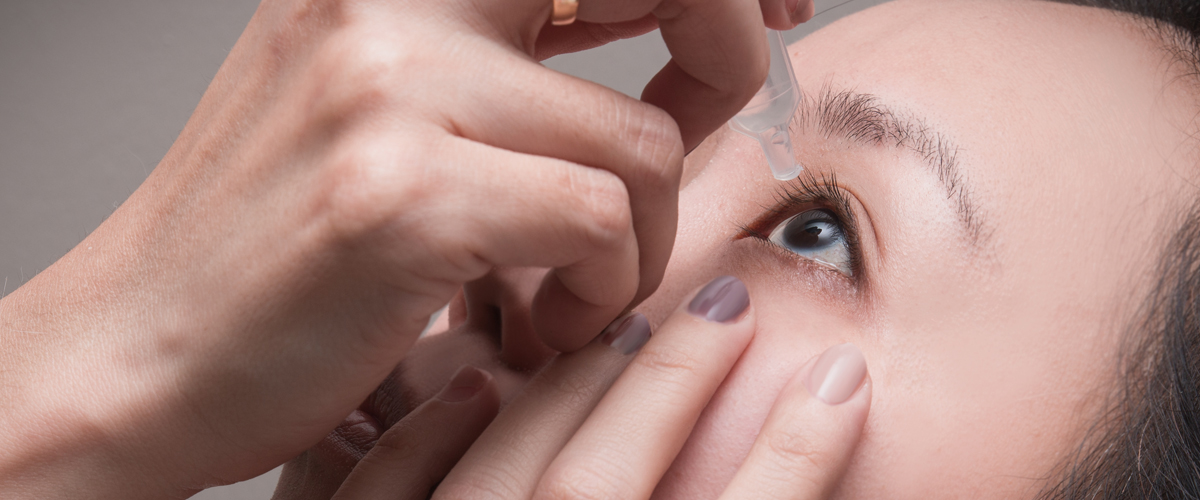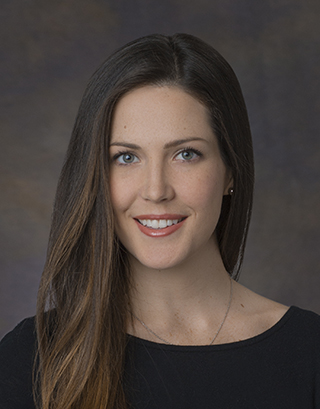What is Dry Eye Disease?
Dr. Ashley Brissette on the rise of the eye ailment DED, its links to inflammation, anxiety, and depression — and how our attachment to screens is partly to blame.

Dry, itchy eyes are often associated with allergies, a dry climate or hormonal changes, but another culprit is on the rise: dry eye disease, or DED. DED is a condition that can last weeks or months at a time and is more common than you might think. In fact, the rate of DED has nearly tripled in recent years, with an estimated 30 million Americans — mostly women — affected.
Dr. Ashley Brissette, an ophthalmologist at NewYork-Presbyterian/Weill Cornell Medical Center and an assistant professor of ophthalmology at Weill Cornell Medicine, says DED is one of the main reasons patients come to see her.
“Staring at screens all day can make your eyes more dry, and this is a major factor in the increase in dryness worldwide,” she says, offering this advice: “Remember to take breaks from the screen. This will allow the eyes to rest. It’s also important to remember to blink when using screens.”
A recent study by the American Academy of Ophthalmology reported that the annual incidence of DED increased from 0.83% in 2005 to 3.02% in 2012 — a significant increase in a relatively short time — and that nearly 8% of women and 3% of men across every age group have DED. Yet many cases go undiagnosed.
To learn more about this underestimated disease, Health Matters spoke with Dr. Brissette about the causes, symptoms, and treatment of DED, as well as its links to inflammatory diseases and mental health.
What is dry eye disease?
Dry eye can occur when your body doesn’t produce enough tears or the tears evaporate too fast. When you blink, the tears spread over the surface of the eye and help keep our eyes moist and our vision clear.
How common is it?
Dry eye is one of the most common reasons people visit an eye doctor. It is estimated that up to 30 million people in the United States have dry eye and up to 350 million worldwide.
What are the symptoms?
Dry eye doesn’t always feel like dryness. Common symptoms include stinging and burning, blurry vision that fluctuates throughout the day, feeling like something is in your eye, irritation when wearing contact lenses, and, lastly, tearing. It may sound funny that tearing is a symptom of dryness, but when the eyes are dry, sometimes the body tries to produce a lot of tears to compensate, and so the eyes start to water.
What causes it?
There are many causes, and often people will have a few reasons why their eyes are dry. We know dryness is common as we get older, and it is very common in women, especially because of hormonal changes caused by menopause. Certain inflammatory diseases, such as rheumatoid arthritis, Sjögren’s syndrome, lupus, and thyroid disease, can lead to dryness. The environment, such as air quality or humidity, is a big factor as well.
Also, screen time is a well-known risk factor, because when we stare at screens we blink less, which can dry out the eyes. For those who work at a computer every day, a good rule of thumb is 20/20/20: every 20 minutes look 20 feet away for 20 seconds. It’s important to give your eyes time to rest throughout the day.
Use of contact lenses can also make the eyes dry. Lastly, certain medications, such as those for high blood pressure, allergies, anxiety, and depression, as well as sleeping pills, can lead to dryness. If you have dry eye, it is important to talk to your ophthalmologist about any medications you are taking.
Dryness cannot be cured, but it can be treated. I always tell my patients that the goal of treatment is to have more good days than bad days.
Dr. Brissette

Dr. Ashley Brissette
What about research linking dry eye to mental health conditions?
Depression and anxiety are more prevalent in patients with dry eye disease. This is a difficult comparison to make because we know that the medications for these conditions can contribute to dryness, but we also know that dryness can sometimes lead to symptoms of depression and anxiety. Lastly, patients with depression and anxiety might be more sensitive to dryness than the average person. It is important to talk to your ophthalmologist if you feel that the dryness is impacting your day-to-day life.
Can DED be cured or is it a chronic condition?
First, it is important to be properly diagnosed. A thorough eye exam with your ophthalmologist is necessary. Unfortunately, dryness cannot be cured, but it can be treated. I always tell my patients that the goal of treatment is to have more good days than bad days, but we will always need to be treating the dryness. Finding the underlying causes for the dryness or triggers that make the dryness worse is extremely helpful.
How is it treated?
Treatment consists of increasing the amount of tears and improving the quality of the tears. I recommend all patients use over-the-counter eyedrops such as artificial tears (preservative-free if using more than six times a day), do a warm compress nightly on the eyelids, wash the eyelashes to keep them clean, and eat a Mediterranean diet rich in omega-3s. Prescription eyedrops can be extremely helpful, as well as in-office procedures to increase the quality of the tears, such as LipiFlow or BlephEx.
What advice do you give patients with dry eye?
My advice is that you don’t have to suffer. There are many options for treatment, and some options work better for some people over others. You must meet with your ophthalmologist for a thorough exam, and together you can come up with a treatment plan that works for you. Although it can’t be cured, it can be helped, so don’t feel like you have to suffer.
Ashley Brissette, M.D., M.Sc., FRCSC, is an assistant professor of ophthalmology at Weill Cornell Medicine, and her practice interests include laser vision correction (LASIK, PRK), cataract surgery, corneal surgery, dry eye, and general ophthalmology.
Additional Resources
For more information, visit the American Academy of Ophthalmology’s EyeSmart site.
